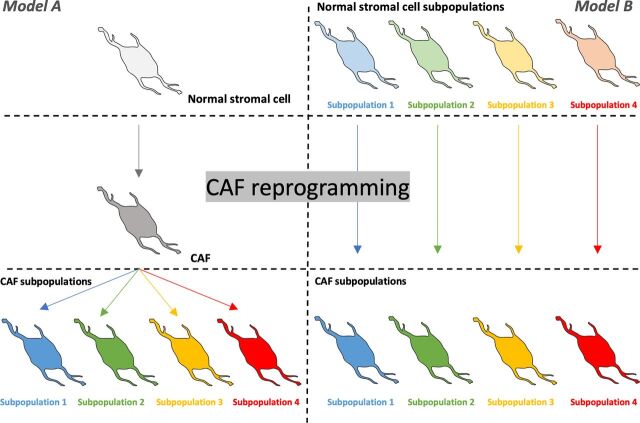Figure 2.
Potential cellular origins of CAFs. Multiple stromal cell types have been proposed as potential origins of CAFs, including resident-tissue normal fibroblasts, adipocytes, pericytes, MSCs, hematopoietic stem cells, epithelial cells, and endothelial cells. How different subpopulations of CAFs are formed in the growing tumor is yet to be fully understood but two main models of CAF transformation and lineage are recognized in the literature. The first of these purports that CAF subpopulations are derived from one type of normal stromal cell that undergoes CAF reprogramming followed by further differentiation that would lead to different CAF varieties and subpopulations (Model A). The second model proposes that CAF subpopulations are derived from different precursor stromal cells in the host tissue (Model B). In both models, CAFs subpopulations can further differentiate into more specialized subpopulations.

